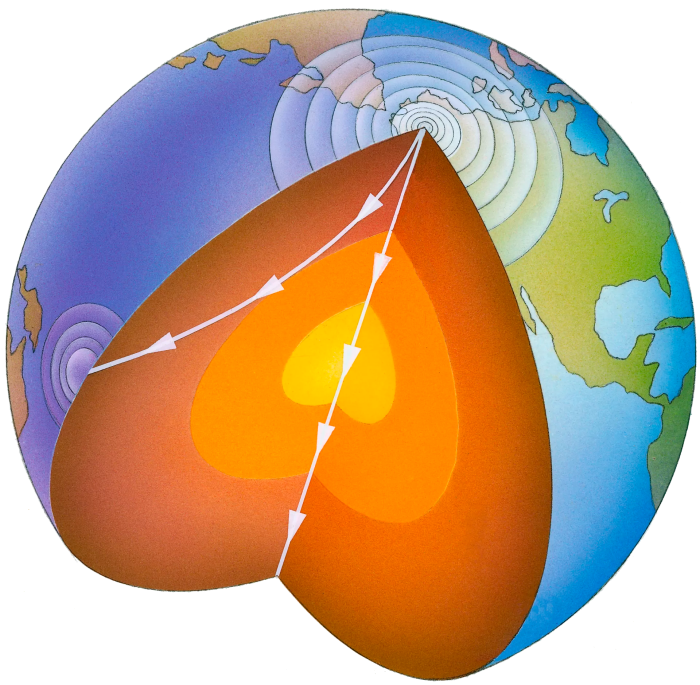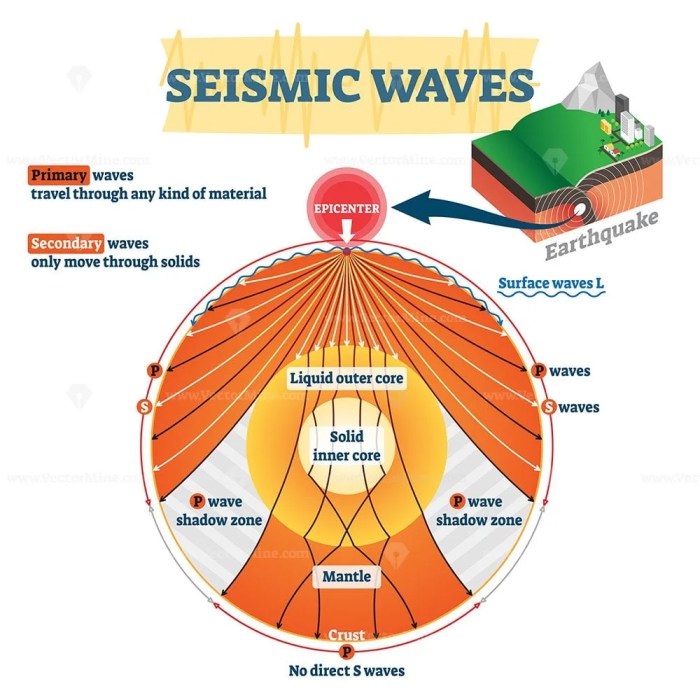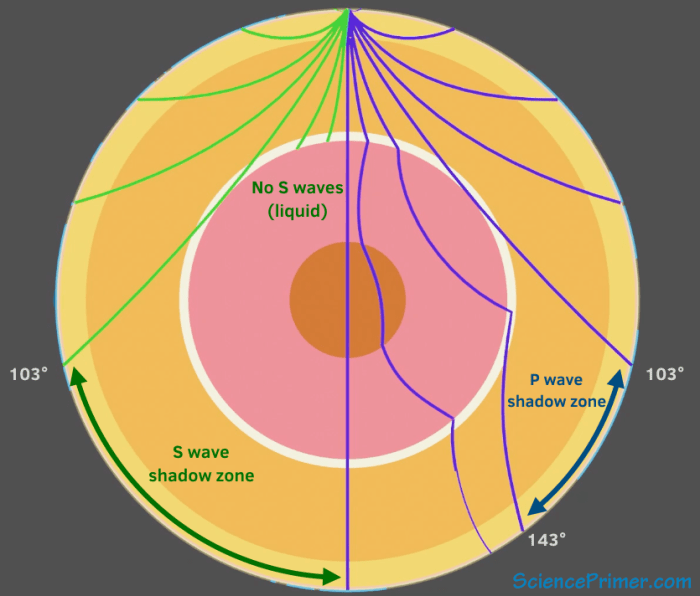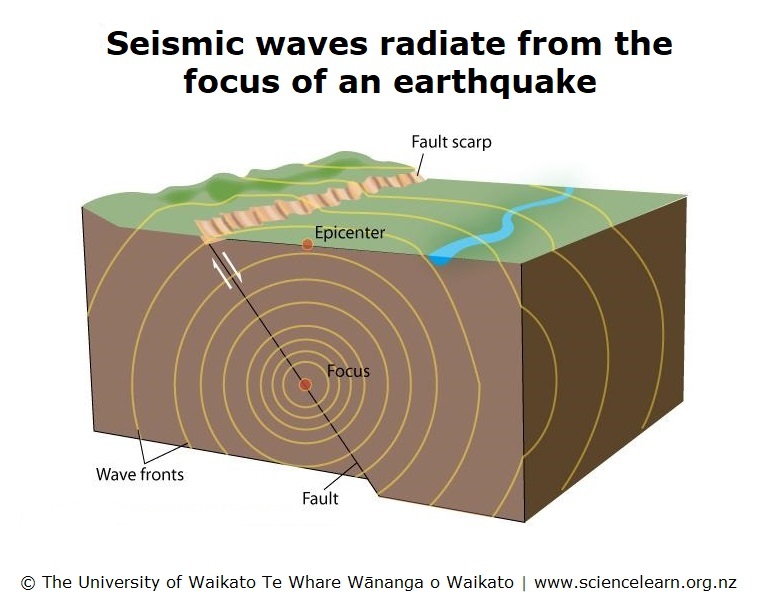Embark on a captivating journey into the realm of seismic waves and earth’s interior ppt, where we unravel the enigmatic layers of our planet. Delving into the depths of geophysics, this discourse unveils the fundamental principles governing seismic waves, their propagation, and their invaluable role in deciphering the intricate structure and composition of the Earth’s interior.
Prepare to be captivated as we explore the fascinating world of seismology, unraveling the secrets that lie beneath our very feet.
Seismic Waves

Seismic waves are vibrations that travel through the Earth’s interior. They are generated by earthquakes, volcanic eruptions, and other sudden disturbances.
There are three main types of seismic waves:
- P-waves (primary waves) are the fastest and travel through both solid and liquid materials.
- S-waves (secondary waves) are slower than P-waves and travel only through solid materials.
- Surface waves travel along the Earth’s surface and are the most destructive.
Seismic waves are used to study the Earth’s interior by providing information about the composition and properties of different layers.
Earth’s Interior: Seismic Waves And Earth’s Interior Ppt

The Earth’s interior is divided into four main layers:
- The crust is the outermost layer and is made of solid rock.
- The mantle is the layer below the crust and is made of solid rock that is hotter and denser than the crust.
- The outer core is the layer below the mantle and is made of liquid iron and nickel.
- The inner core is the innermost layer and is made of solid iron and nickel.
Seismic waves provide information about the composition and properties of each layer by traveling through them at different speeds.
Seismic Tomography

Seismic tomography is a technique that uses seismic waves to create images of the Earth’s interior.
Seismic waves travel through the Earth at different speeds, depending on the composition and properties of the materials they pass through.
By measuring the speed of seismic waves, scientists can create images of the Earth’s interior that show the distribution of different materials.
Earthquake Hazards

Earthquakes are caused by the sudden release of energy below the Earth’s surface.
Seismic waves are used to locate and measure earthquakes.
The different types of earthquake hazards include ground shaking, liquefaction, landslides, and tsunamis.
Seismic waves can be used to mitigate earthquake hazards by providing early warning systems and by helping to design earthquake-resistant structures.
FAQ Section
What are the different types of seismic waves?
There are three main types of seismic waves: P-waves (primary waves), S-waves (secondary waves), and surface waves. P-waves are the fastest and can travel through both solids and liquids, while S-waves are slower and can only travel through solids. Surface waves are the slowest and travel along the Earth’s surface.
How are seismic waves used to study the Earth’s interior?
Seismic waves are used to study the Earth’s interior by analyzing their propagation and reflection patterns. By measuring the speed and direction of seismic waves, scientists can infer the density, composition, and structure of the Earth’s layers.
What is seismic tomography?
Seismic tomography is a technique used to create images of the Earth’s interior by analyzing the travel times of seismic waves. By combining data from multiple seismic stations, scientists can create detailed 3D models of the Earth’s structure.
